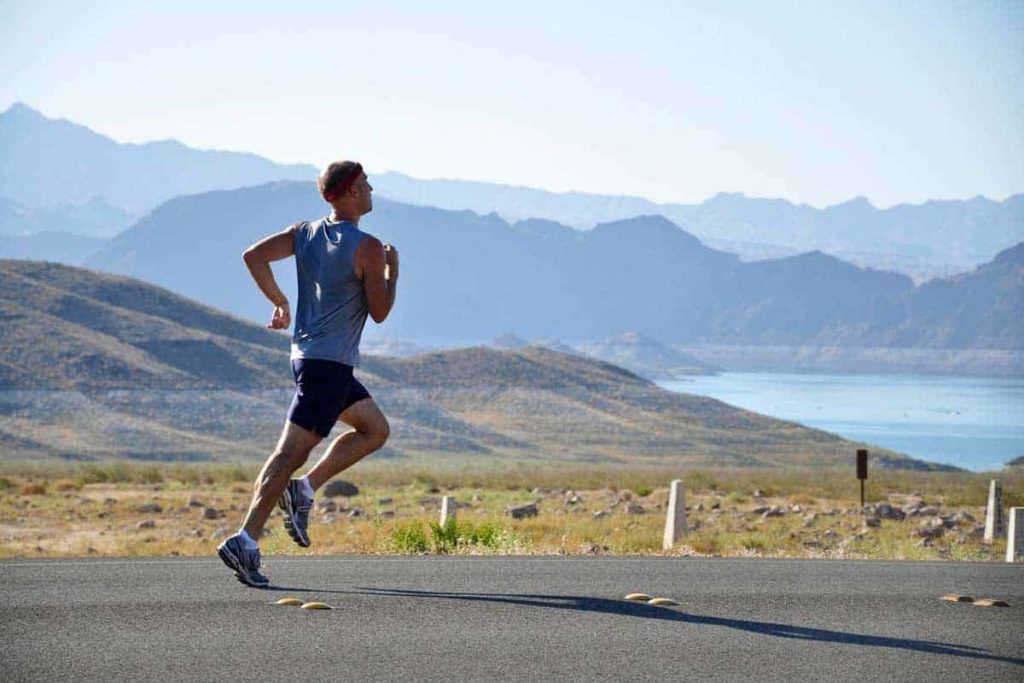Running has proven to be among the best exercise for weight loss, it increases your metabolism, it improves your fat burn, and it has countless of mental-health benefits. But is running an excellent exercise to do if you want to build strong and prominent abs?
The abs are probably one of the hardest muscles to tone in our bodies because we tend to store fat in our midsections.
Our postures also add up to our poorly toned abs. When people don’t hold themselves in the right position, the muscles become lazy, and our bodies tend to follow the path of the least resistance. Our core is the main component that holds us upright, so the start of building ab muscles is definitely to watch your posture.
Running And Abs
Besides looking good and toned, having a toned core is really healthy. Running consists of constantly shifting your weight and changing support from one leg to the other.
Stable and strong posture, which is necessary for running, is partly provided by the skeleton, and partly by the muscle structure. The most important muscles that provide the posture and stability are the back and the abdominal muscles.
When you run, your body is subjected to forces three times your own body weight. To prevent any injuries to your back and core while running, you must invest in a quality running gear that will allow you to run comfortably – find more on WalkJogRun.
Because you exert so much force onto your body while running, studies have shown that stronger abs can prevent many back injuries after running.
How Does Running Help?
Running is an exercise that helps to increase circulation, which, as a consequence, helps to burn fat.
Blood in the abdomen helps break down the fat cells. Everyone has a six-pack; it is just hidden underneath the layer of fat.
Cardio workouts are essential if you want to burn all the excess fat and reveal your tight core. Also, it is important to note that exercising only the abdominal muscles will not give you the leanest abs.
Muscles that make up the abdominal area run up the back and stretch to the gluteus and thighs. These are all the muscles incorporated while running.
Tight leg and back muscles are needed to run; therefore, running is an exercise that stresses all the muscle groups necessary to make your core lean and muscular.
But
Jogging and tempo runs do burn fat, but if you are aiming for the most optimal results, maybe consider adding sprints to your running plans. High-intensity sprints are the most effective for burning fat. You can incorporate intervals of speed runs with your regular constant tempo; doing this helps to improve your running endurance.
Go from short to high-intensity sprints. More speed requires more stability, which means your back and ab muscles are working harder. Sprinting will increase the rate of your metabolism and keep it raised even after you are done with your workout.
After your body gets used to the sprints, you can increase their difficulty by doing it uphill, adding hip weights, or introducing hurdles.
If you have never sprinted before, here are a couple of tips to get you started.
Before starting to sprint, you need to warm up your muscles and joints; running a couple of laps around the track will do. After you are done with your warm-up run, make sure to have those hamstrings and quads properly stretched before sprinting.
After about 10 minutes of stretching, you should be warmed up for your sprinting sessions.
It is crucial to note that if you skip the stretch, you will definitely be at risk of serious injury. If you are a beginner, it is advisable to start sprinting at a 50 percent speed elevation than your regular tempo until you feel more comfortable with increasing the speed gradually.
A great plan is to 6-10 times of 100-meter laps. After each lap, make sure to walk back to the starting line. It will allow your body to rest. Never start another sprint until you can breathe properly.
After completing your daily sprinting session, you will definitely feel your legs and abs pumping; it feels just the same as finishing a severe leg or ab session with weights.
Another great way to exercise your abs while running is incorporating hurdle drills or other variety of drills (like high knees, but kicks, skipping, etc.) These are usually performed in 30m distances.
Drill down and walk back to the starting line. Repeat this for a few times. Keep the core tight the entire workout, and pay close attention to the position of your back.
Also, an important part of any run, be it a tempo or a sprint, it is vital to engage the arms, as well. Your arms and legs should be at a 90-degree angle at any position of your run.
If you want to practice your arm positioning, stair drills are excellent for that, because it focuses more on the arms than the legs.
Never stop before the finish line. Stopping suddenly before or even after you crossed the line is a serious risk of injury. Run through the line and slowly decrease your speed, from spring to jog.
What About Your Diet
We have all heard the famous saying that muscles are built more in the kitchen than in the gym. When it comes to building your abs, the best ‘recipe’ is to eat just enough to nourish your muscles, but not enough to continue feeding the excess fat on your belly.
If you want to lose the fat more quickly than just cutting 50 calories off your daily intake (do not get me wrong, it will do the job, but very slowly) take into account that you are a runner, which means that your body fat plays a significant role in fueling your workouts, so you do not have to rely on your diet alone. For each additional calorie that you take out of your diet, your body will burn one from your fat storage.
But, you mustn’t cut your intake so low that your muscles are not able to recover as quickly, not to mention the hunger you will feel all day.
But you can certainly cut back around 100-200 calories each day without depleting your muscles of carbs or spoiling your endurance. Once you lose the weight you wanted, you can gradually add back those calories to your diet without weight gain.
The good news is that you do not necessarily need to eat less to lose weight. Take a close look at our current diet. There is probably some room for improvement when it comes to the quality of your food.
You can simply replace your favorite high-calorie foods with the lower-calorie substitutes, for example, switch your fries to oil-free, oven-baked potatoes.
Incorporate as many veggies and fruits as you possibly can into your diet, a lot of healthy carbs, because running is a form of exercise that fuels directly from the carbs we eat.
Avoid any soft drinks, processed foods, refined grains, such as rice, bread, and pasta, yogurt, and especially red meats.
Bread, white rice, and pasta are probably the hardest to cut, but try replacing them with whole grains, quinoa, and oatmeals.
Is Running Enough To Build Strong Abs?
This is not a question that has a yes or no answer. Depending on what kind of running you do, you may also want to include other core exercises or weight training.
For example, if you are a long-distance runner, training your abs only with running exercises will be enough, especially because long-distance runners often are skinny; therefore, they usually have more prominent abs.
But, if you are a sprinter, or you are running enthusiast, supplementing your runs with more exercises might be beneficial to you. There are countless exercises to do and plans to follow, depending ton whether you have access to equipment, or not.
Some of the best strength training for runners include squats, deadlifts, lunges, push-ups, and planks. These are just the basic exercises which basically everyone could do.
There is a myth, especially among women, that strength training will make them bigger and more muscular, but it is tough to build big muscles for runners. You would need to eat an enormous amount of food in order to do that, and you need to lift hefty weights, which is not necessary for a runner.
When it comes to abs and burning excess fat, it is important to note that losing too much fat can put your health in danger, especially if you are a woman. Men, for example, have much less body fat percentage than women do, so do bear that in mind.
The acceptable range for women is 25-31 percent, but if you are an athlete or someone who likes to exercise, you will be lower than that. But, your body fat percentage must never go under 14 percent.
You may like these articles as well:
Does Rubbing Alcohol Kill Lice?
Can Diabetics Drink Coke Zero?
Is Aids An Autoimmune Disease?





